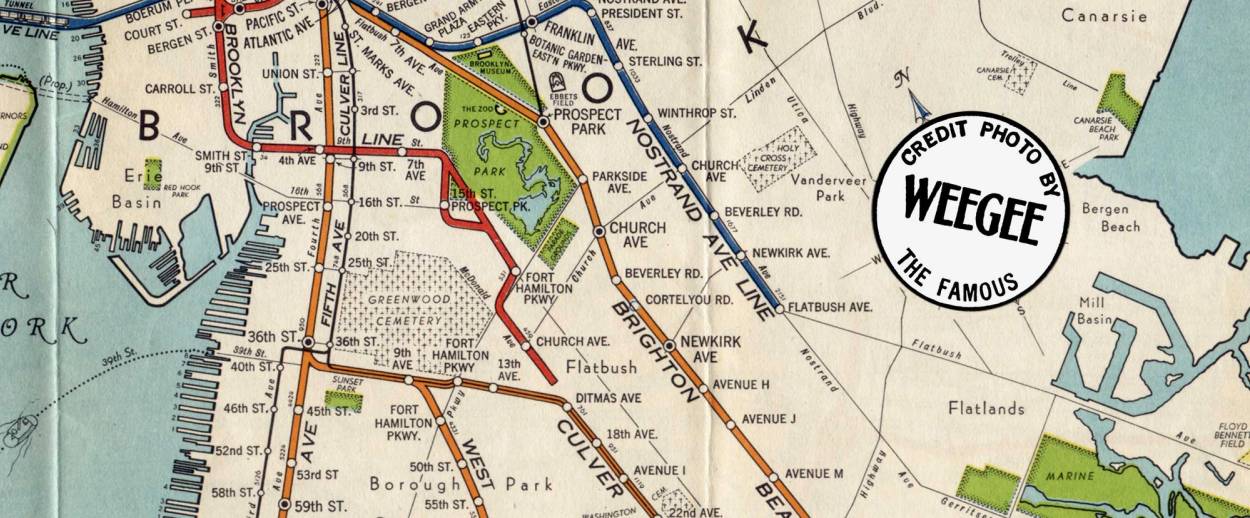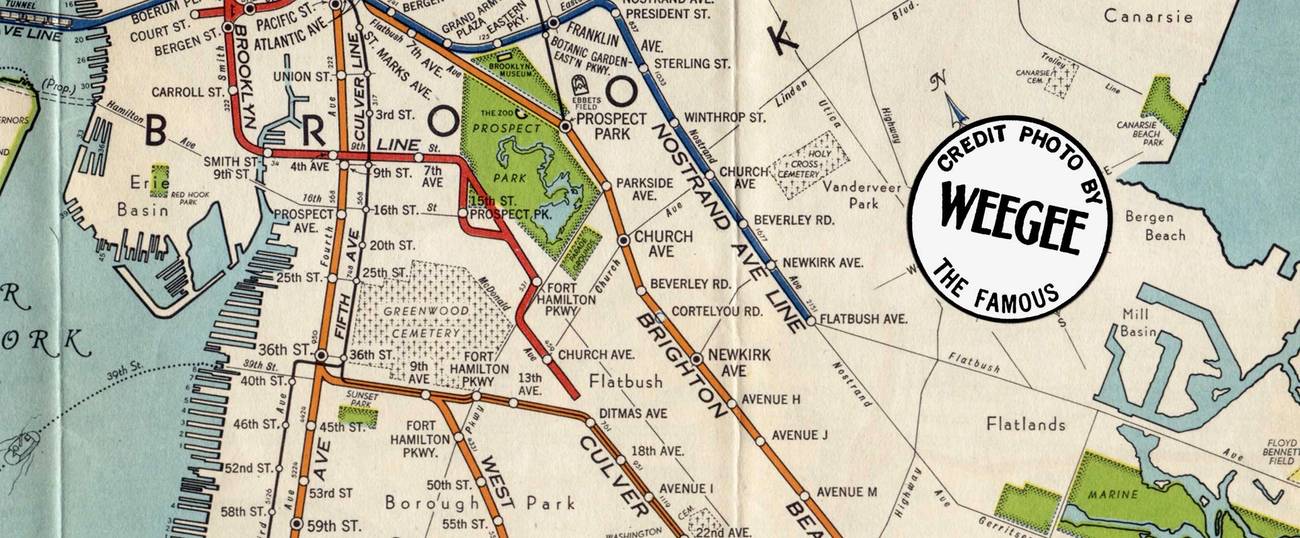No, Thank You, ‘Whore From Ohio’
Rokhl’s Golden City: A new Yiddish production of a Hanoch Levin play is tone deaf to the #MeToo zeitgeist




If I had to identify one image encapsulating the inverse of everything that is Yiddish Fiddler, it would probably be my old friend David Mandelbaum giving a (simulated) shtupping to a prostitute on stage, in Yiddish.
I’ve definitely left the Yiddish theater angry before, but I’ve never left in an “I can’t look anyone in this elevator in the eye” mood. This was last week, when I finally saw Hanoch Levin’s The Whore From Ohio, which New Yiddish Rep has been playing in Hebrew and Yiddish. There was David, with a pair of black panties over his face, and there was I, a person who was a lot more prudish than previously suspected.
The Whore From Ohio opens with an old man (Mandelbaum) haranguing a sex worker into giving him a freebie for his birthday. Despite terrific performances from all three actors (Mandelbaum, Eli Rosen, and Mary Black, giving a brilliantly bored turn despite the material) I’m hard pressed to see what relevance this story has in 2018, when male tantruming over access to female bodies isn’t just not interesting, if you watch the news at all it can be downright murderous.
I think I get why David wanted to bring Levin into repertory. For a time, Levin was the acerbic voice of Israeli theater. Angry, political, vulgar, and tender, Levin’s work provoked government ire and courted controversy. And the audience I saw it with enjoyed it, slapstick shtupping and all. As usual, I got to play the most important behind-the-scenes role: dour killjoy.
I’m all about new translations into Yiddish when the Yiddish translation amplifies something in the text. NYR’s Waiting for Godotand Death of a Salesman are good examples where the Yiddish created a new, deeper level of meaning. I wasn’t entirely convinced, though, with Whore From Ohio.
If the golden age of Second Avenue was a dynamic between Eastern European immigrants bringing new Yiddish culture to the United States for an Americanized audience, today’s Yiddish theater lives on a new dynamic: immigrants from the Yiddish-speaking Hasidic world shaking up the established Yiddish theater world. NYR actor Eli Rosen is one of those new immigrants. He’s already an accomplished translator, with the Yiddish translations for Whore From Ohio as well as Rhinoceros under his belt.
Luzer Twersky is another immigrant from that land. He gave an unforgettably slimy performance as Shloyme the pimp in the NYR’s God of Vengeance. I still stand by my belief that if he, not Matisyahu, had played the Jewish exorcist in 2012’s otherwise forgettable dybbuk thriller, The Possession, the movie might not have been such a flop. (See J. Hoberman’s Tablet review here.) There was a buzz among my friends last week when it was announced Luzer was going to be a guest on Marc Maron’s WTF podcast, a mark of, if not having made it, at least leveling way, way up.
You know who probably would’ve loved the Yiddish Whore From Ohio? Legendary crime photographer, Weegee (born Usher Felig near Lviv, Galicia). I’m reading Flash: The Making of Weegee the Famous right now and am enjoying a taste of extremely seedy old New York. Though he reinvented himself as the not terribly Jewish Arthur (and then as the artist we now know as Weegee), Felig didn’t entirely efface his Eastern European origins. My old friend (and fellow Klezmer Girl) Sarah Weinman has a great piece in her latest Crime Lady newsletter about Weegee’s photos of the Yiddish theaters of Second Avenue. If you think the classic era of New York Yiddish theater was all soft focus, sentimental kitsch, think again.
Meanwhile, this Sunday, Aug. 12, is one of the most solemn dates on the secular Yiddishist calendar. Often known as Night of the Murdered Poets, it commemorates the murder of Jewish Anti-Fascist Committee members, who, in addition to being poets, were also scientists, filmmakers, journalists, and more. The flattening of the Aug. 12 martyrs into “poets” was part of a complex historical moment in which the American connection to Soviet Yiddish was made kosher by transmutation into a ritual reification of Jewish anti-Communism. Yiddishkayt’s Rob Adler Peckerar has an excellent piece on this history here.
The Congress for Jewish Culture puts on an excellent Aug. 12 program every year. This year, it features the music of Zisl Slepovitch in a program called SYLL-ABLE (Soviet Yiddish Literati): “At the core of the program are selected pieces by the three poets murdered in Minsk, Belarus, around the late 1930s-early ’40s, Moyshe Kulbak, Izi Kharik, and Zelik Akselrod.”
I asked CJC director Shane Baker, if we are to move past the somewhat outmoded politics of Aug. 12, what does the future of an event like this look like? “For me, the date has become a way to recall the wonderful creativity of Soviet Jewry, a category that, while no longer technically in existence, comes right down to the FSU groups in America today, people who are finding new and creative ways to hang on to and advance their Yiddishkeit, sometimes with religion, sometimes without, but always with a great hunger and admiration for their cultural treasures: music, literature, and art.” I can think of no better, more hopeful exemplar of this creativity than Zisl.
***
Go: The CJC SYLL-ABLE event will be at 2 p.m. at YIVO, presented in association with YIVO and the Jewish Labor Committee. Make sure to reserve a ticket by emailing here. If you can’t make it on Sunday, but want to expand your understanding of the cultural ferment of the 1920s and ’30s, check out this book talk by my friend Mayhill Fowler. Her groundbreaking book about Soviet theater in the ’20s and ’30s is called Beau Monde on Empire’s Edge: State and Stage in Soviet Ukraine. Rather than the old-fashioned lens of interrogating artists according to whether they were “cooperative” or “subversive,” she suggests a multidimensional analysis in which the state cultural apparatus needed artists as much as artists needed the state.
Watch: You can see snippets of David Mandelbaum and Luzer Twersky at the NYR in the documentary One of Us, on Netflix. If you haven’t been able to get a ticket to Yiddish Fiddler yet, rejoice. The show has been extended through Oct. 25. This is truly a magical production. Not to be missed.
ALSO: Wednesday, Aug. 8 at 8 p.m. my friend Eléonore Biezunski presents a new, utterly dreamy sounding program of French (and klezmer) songs called Titi Parisenne. She promises songs of uprootedness, of workers and underworld, of immigrants and artists and the city that adopted them. At Barbés, 376 9th Street, Brooklyn. … If you’re going to be in London, the Jewish Music Institute opens its wonderful Klezfest and Ot Azoy programs on Sunday, Aug. 19. With lots of public events and stellar faculty, make sure you check out the complete list here. … Two special Yiddish-y events to check out if you’ll be in Montreal or in Toronto for Ashkenaz: Aug. 30, a double bill of Yoni Kaston’s Tango Yona and Sasha Lurje and Craig Judelman’s fusion project Lebedik Yankee. … And Sunday, Sept. 2, my friend Avi Hoffman’s new Yiddish horror short Shehita is premiering at Ashkenaz and I’m dying (groan) to see it. … Many years in the works, the first (?) Cuban-Yiddish opera, Hatuey, opens on Sept. 14 and I recommend you get your tickets now.
Rokhl Kafrissen is a New York-based cultural critic and playwright.